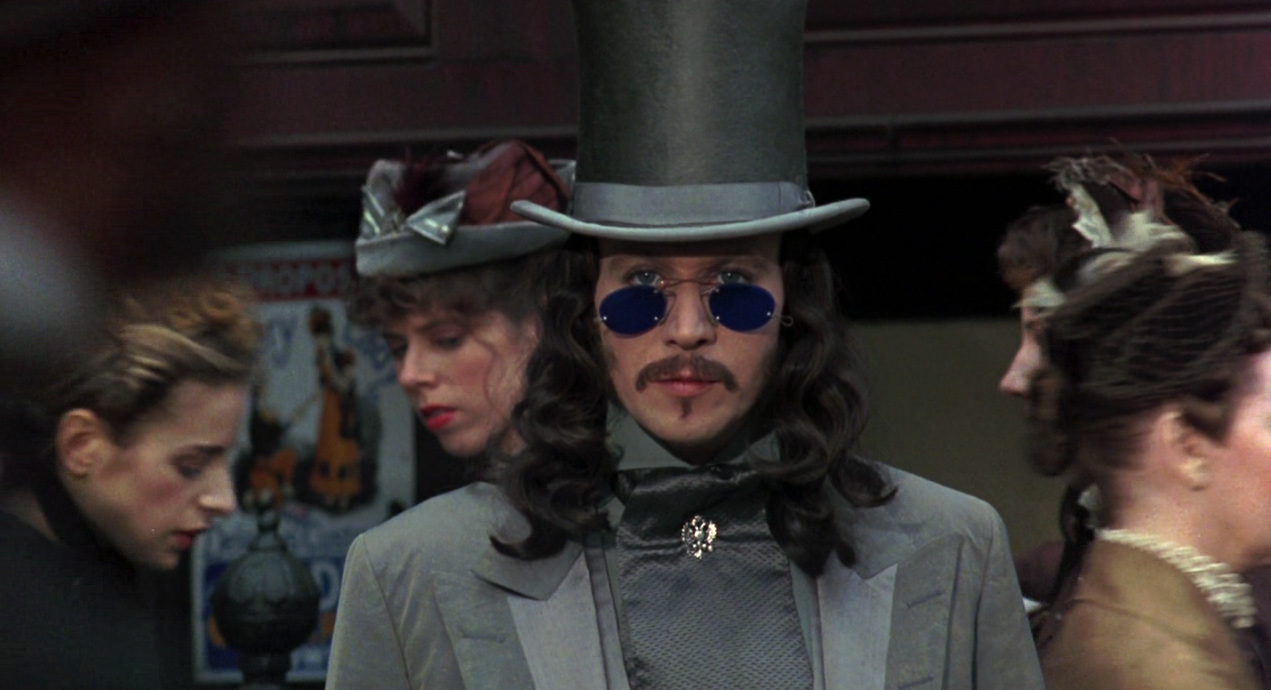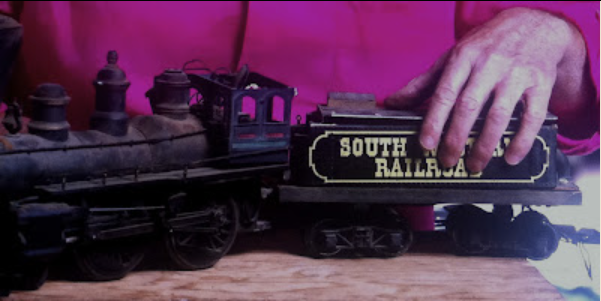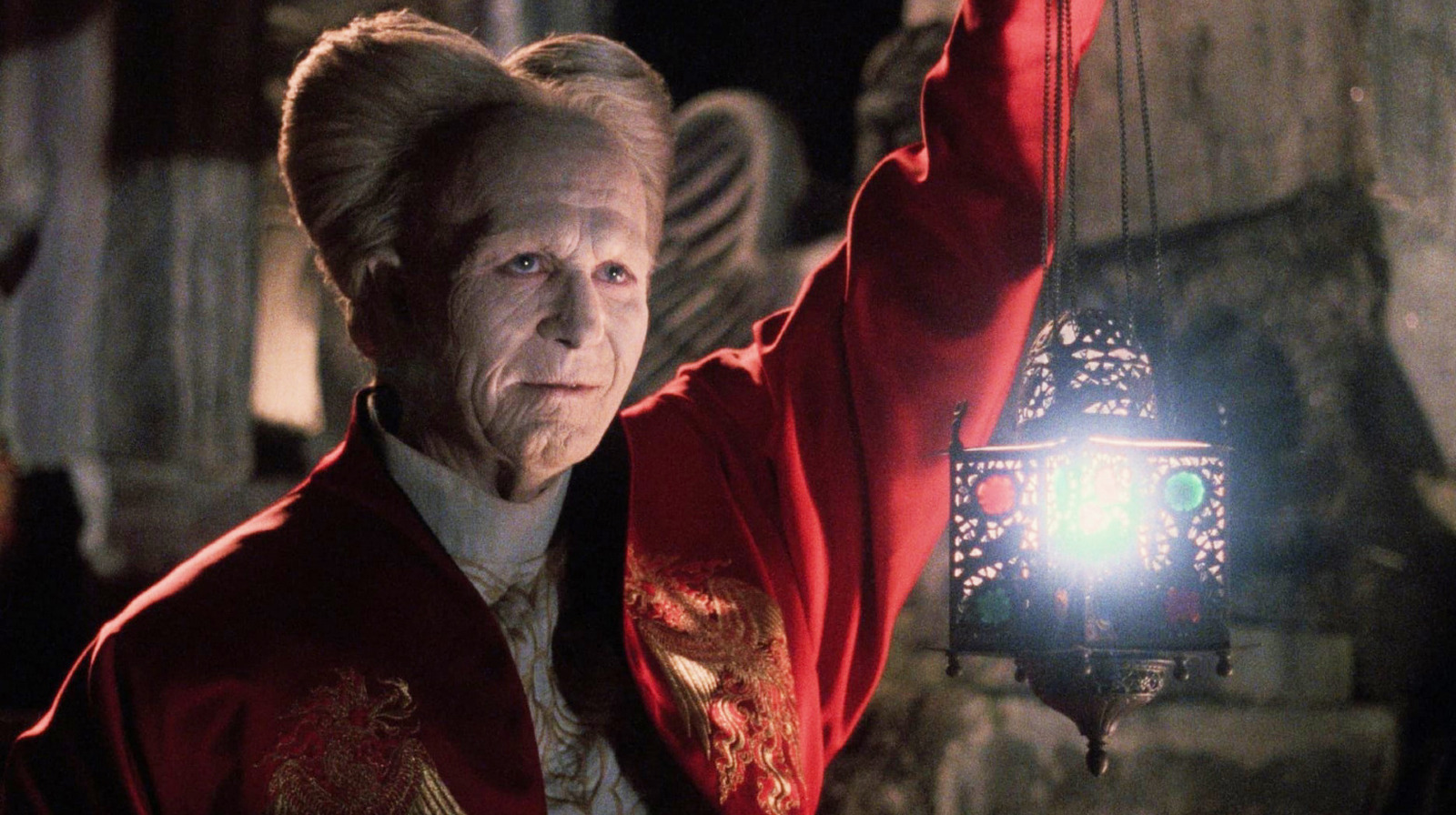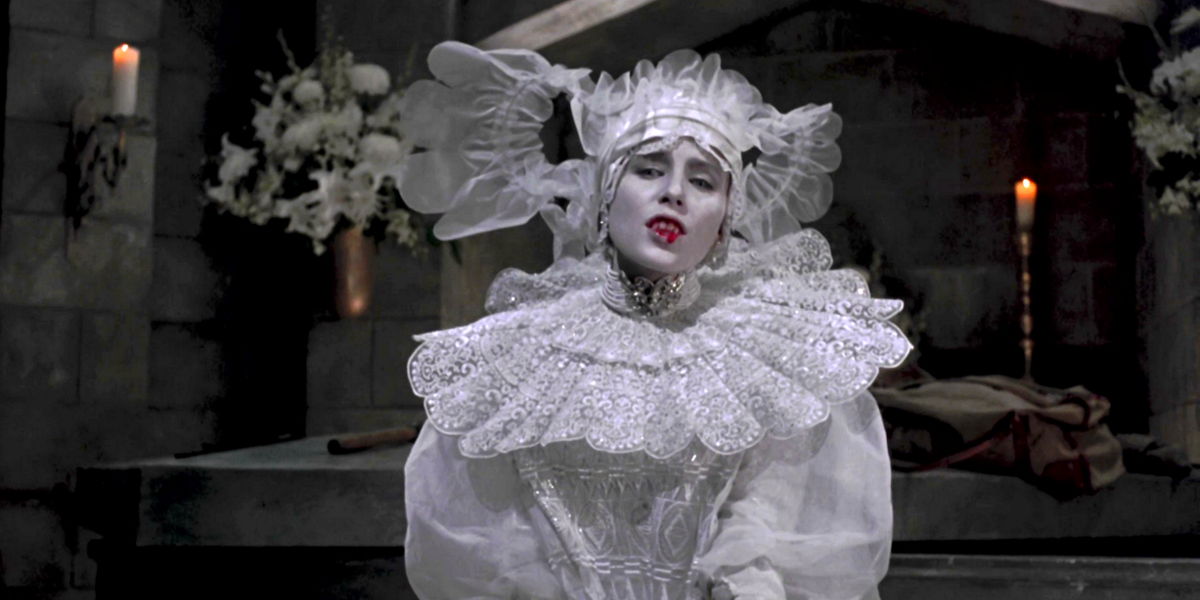Bram Stoker’s Dracula, directed by Francis Ford Coppola is a 1992 film that seems to suck you into the late 1800’s through creative film work, intricate costuming, and intriguing storytelling. Francis Ford Coppola created films such as the Godfather one, two, and three, Apocalypse Now and The Outsiders. I believe this movie is different from those, though, with more expression in the costuming, use of props and effects, and just the flamboyant nature of the film.

As stated, the cinematography, prop work, and costuming is very old-fashioned and also intriguing. The staging and way that this movie is shot is what gives the film a sense of antiquity and feels very proper to the time period the film is set in. Coppola refused to use computer-generated imagery throughout the film, meaning all the effects you see in the film are other forms of camera tricks. For example, there’s scenes that utilise the old technique of using miniature scenes for wide shots of Dracula’s castle and a scene of a train passing through a valley to Transylvania. There are many examples of on-set and in-camera methods. Towards the very beginning of the film, Coppola uses shadow puppets to reenact the war Vlad the Impaler (Dracula pre vampire transformation) took part of and in another train scene, Jonathan is seen to have a map of the Transylvania terrain placed on his face, this was done by placing a projected image on his face. There’s also an iconic vampire mirror scene that takes place in the movie, Dracula comes up behind Jonathan while he shaves, and in the mirror’s reflection we do not see Dracula. This is a simple and classic technique done by having Jonathan, played by Keanu Reeves, stand behind a false wall and play as a reflection while someone who looks like Keanu from the back stands adjacent from that wall.

With no CGI on their hands, this also means that the monsters and ghouls that appear in this movie all exist due to the amazing makeup and prosthetic work of Greg Cannom, Michele Burke, and Matthew W. Mungle. The first form we see Dracula in is in the form of an old man, as mentioned in the book. The prosthetic and makeup team shine from the beginning with this look with the intricate tall wig and knifelike fingernails. Unlike many other renditions of Dracula where they stray towards the classic hard widows peak and dark black hair, or they are pulled more to the classic and original Nosferatu look. This team of artists goes against any Dracula you think you may know to create something completely fresh and new. Eiko Ishioka was the costume visionair for this movie and I cannot stress how spectacular each and every one of her costumes are, each draped with conceptual intent and each design heavy with mostly Japanese influence. One of my favorite costumes in this movie would have to be the costume Dracula, played by Gary Oldman, is in when he first spots Mina, played by Winona Ryder. Dracula is seen buttoned up in a dark, multiple part suit with a tall old-fashioned hat, dark makeup, and long hair. These tall stovepipe hats have been associated with vampires or the gothic fashion for many films after. The long hair he has had inspiration from, as silly as it sounds, 80’s rock bands. People such as Eddie Van Halen or the entire Motley Crue, since these people are associated with danger.

Another iconic costume from this film would easily be the armor of Vlad the Impaler. Ishioka was said to take inspiration from the fantasy armor and the anime tradition to create visionary and surreal armor. There is also very obviously inspiration just from human anatomy and musculature. The last costume I will talk about will be the glorious dress Lucy, a friend of Mina’s that Dracula eventually turns into a vampire, wears in her casket when the public believes her to have passed. In the Victorian era, it was proper for everything to be properly buttoned, tucked, and corseted, but this death dress goes against all of that with its massive adornments such as the headpiece, large sleeve and long train. Whether it was intentional or not, a lot of these are most definitely aspects and parts of drag culture. The basic couture would to simply be to wrap her up on lace and silk and call it as good as done but this over-the-top and boisterous dress knocks down every wall of Victorian limitations, Lucy has made this dress completely her own in the most offensive way to the Victorian way, but in the most fabulous way in my opinion.

In conclusion, this movie fascinates me with its vivacious costuming and unique but also passe use of props and film. Of course, some things prevented me from fully enjoying the film, such as the choice of actors, but that obviously did not and does not prevent me from being an admirer of this film, as I think many others would say the same. But with all of that being said, I hope you may take some time out of your day to truly take in this classic movie that I have grown to love and learn from.

For addition information on Francis Ford Coppola and Bram Stoker’s Dracula, please visit:
IMBD – https://www.imdb.com/title/tt0103874/
Entertainment – https://ew.com/article/2015/10/06/francis-ford-coppola-remembers-dracula/
Cinephilia & Beyond – https://cinephiliabeyond.org/dracula/
The Spool – https://thespool.net/features/bram-stokers-dracula-review/
Collider – https://collider.com/francis-ford-coppolas-dracula-twixt/
Vada Arndt is an Art & Design Studio major with more energy than most humans can only hope to imagine! In addition to her interest in the intersection of fashion and the fine arts, she travels the Midwest to catch curious and unusual art exhibitions and music shows near and far.


